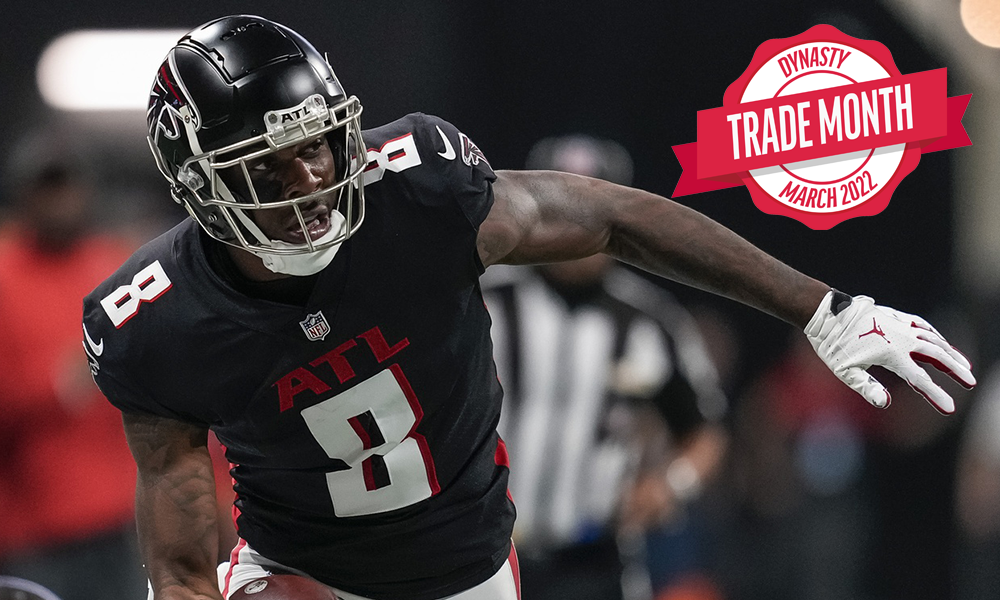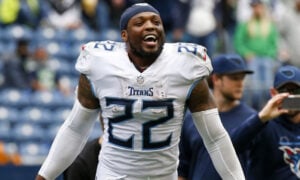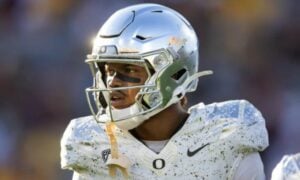Dynasty Trade Month: Trading in Dynasty Startups

The off-season is in full swing, which means that dynasty startup season has taken full effect in the dynasty community. In recent years, the auction format has become more and more popular as dynasty startup drafts have become a relic of the past for some.
However, one advantage that startup drafts will always have over startup auctions is the active trade market. Startup draft pick trades are much more common than auction money trades in startup auctions, if your auction league even allows that. Many people prefer startup auctions because you can “build your own team”, but you can do that just as much in startup drafts, it just takes making trades.
There are two types of trades involving startup picks: trades made before the draft starts or involving picks several rounds in the future, and trades involving picks that are on the clock or soon to be on the clock.
In leagues where trading startup draft picks is available days or weeks before the startup, it is much more of a projection of what you want your team to look like, using ADP and trade values as a barometer for the players you may be targeting. In these trades, being accurate for where tier drops are expected can be incredibly valuable, and being inaccurate with those projections can be costly. I try to avoid these projections and make these in-advance type trades centered around how I want to build my team.
For example, if I know because the lineups are shallow that I want a top-heavy team, I would try to make trades that look like 3.04/4.09 for 1.10/9.10 or 5.05/6.08/7.05 for 2.06/10.07/11.06. Or with the inverse, if I want better depth to protect against injuries, I would try to make trades that look like 1.08/7.08 for 2.12/3.01 or 3.03/8.10/10.10 for 5.04/6.09/7.04. Making these moves, you aren’t targeting a specific player, you are more so targeting a tier of player, so if you are the type that says “I am walking out of this draft with AJ Dillon no matter what”, this isn’t necessarily the type of move to meet that objective.
One benefit to the in-advance type startup trade is the stench of desperation isn’t quite as high as it is for the trades for the picks that are made shortly after the trade is made. It is a lot easier to trade up to 4.04 in round one than it is when 4.04 is on the clock and Tua Tagovailoa is the last young quarterback left on the board.
While the trades in advance may be easier to manipulate from a trading perspective, that doesn’t mean the other side of that coin, trading while on the clock or near it is also necessary. Setting tiers for yourself and monitoring those tiers as the draft unfolds is incredibly important to making trades during a startup draft. If you are targeting a quarterback in a superflex league and there are three quarterbacks left in your self-assigned tier and your next pick is nine picks away, that is when I start attempting to trade up to select one of the quarterbacks that I want.
One of the difficulties of trying to trade up is some managers are not looking to trade back, so just waiting until that last quarterback of the tier is there to attempt to make a trade may be a fool’s errand as the manager takes that last quarterback rather than entertain your offer.
“Trade down, Trade down, Trade down”. The classic advice that NFL fan bases give to their teams and many dynasty analysts provide to their audience when asked to select between two players who are closely valued or in the same tier. As is often said “it takes two to tango”, so in order to trade down, you have to have a manager who wants to trade up as well.
Outside of the “future” type trades outlined above, the best time to trade down is when you are on the clock. Yes, many dynasty managers value players similarly, but not all tiers look the same. Some dynasty managers may have a top tier of four tight ends with Kyle Pitts, Mark Andrews, Travis Kelce and George Kittle, while others may see a huge drop in value from Andrews to Kelce, creating that urgency to trade up before Andrews is off the board.
One of the most common startup trade questions that I see each year is “what is a future first worth in a startup?” Part of the reason that is asked every year is there is never truly a right answer, especially because it can vary so much based on does the startup include rookies, rookie picks, rookie slots or even none of the above.
Rookie picks are likely the most common before the NFL draft with rookies themselves being more popular after the NFL Draft. In either scenario, you can use discussions around rookie picks and their relative value to next year’s picks to fuel your answer to this question. If the market is showing that 1.07 equals the following year’s first-round pick and 1.07 is being drafted around 6.02, then those sixth-round picks are worth the equivalent of that future first.
One of the most common mistakes I see when trading for future first-round picks is not evaluating what you could have at that 6.02 pick and asking would you rather have that asset or that future first? And calculating the risk of that future first being late as well as accounting for the time discount of waiting one year for that pick to begin scoring points on your roster, unless you trade it later on.
For people who are new to dynasty, they are often seeking a trade calculator or analyzer for their startup trading needs, but the truth is that startups vary so much from format to size to manager type that it is difficult to put together a calculator that says Pick 12+Pick 13 > Pick 6+Pick 25.
The best advice I can give related to trading of dynasty startup draft picks is to create tiers and follow those tiers without blindly assuming that everyone will draft the same way your tiers are ranked, be aware of the tier drops, and don’t wait until the end of tiers to try to trade up.
When attempting to trade down, don’t be afraid to use some clock of a slow draft. New managers can feel pressured to keep the draft moving by league chats, but the draft clock is there for a reason and that doesn’t mean taking up seven out of the eight hours available to attempt to trade every time, but it does mean, if you have been on the clock for an hour and waiting for a response to an offer to trade down, it doesn’t hurt to wait one to two hours to get that response from the other manager.
Startup drafts are likely the most active your dynasty league will ever be on the trade market with the most assets available for trade, particularly ones without a name attached to them. Gaining value to your roster via trades in the startup is the best way to set your dynasty team up for success, whether you are going win-now, productive struggle or somewhere in between, it is important to be an active member of the trade market during the startup.
Lastly, when you are one of those active traders during the startup, once the startup is over, teams looking to make deals will look to make you offers because they know that you like to make trades and are willing to make deals as shown by your startup dynasty trades.
- Dynasty Commish Calendar: August - August 5, 2023
- Dynasty Commish Calendar: June - June 9, 2023
- Dynasty Commish Calendar: May - May 3, 2023



































































